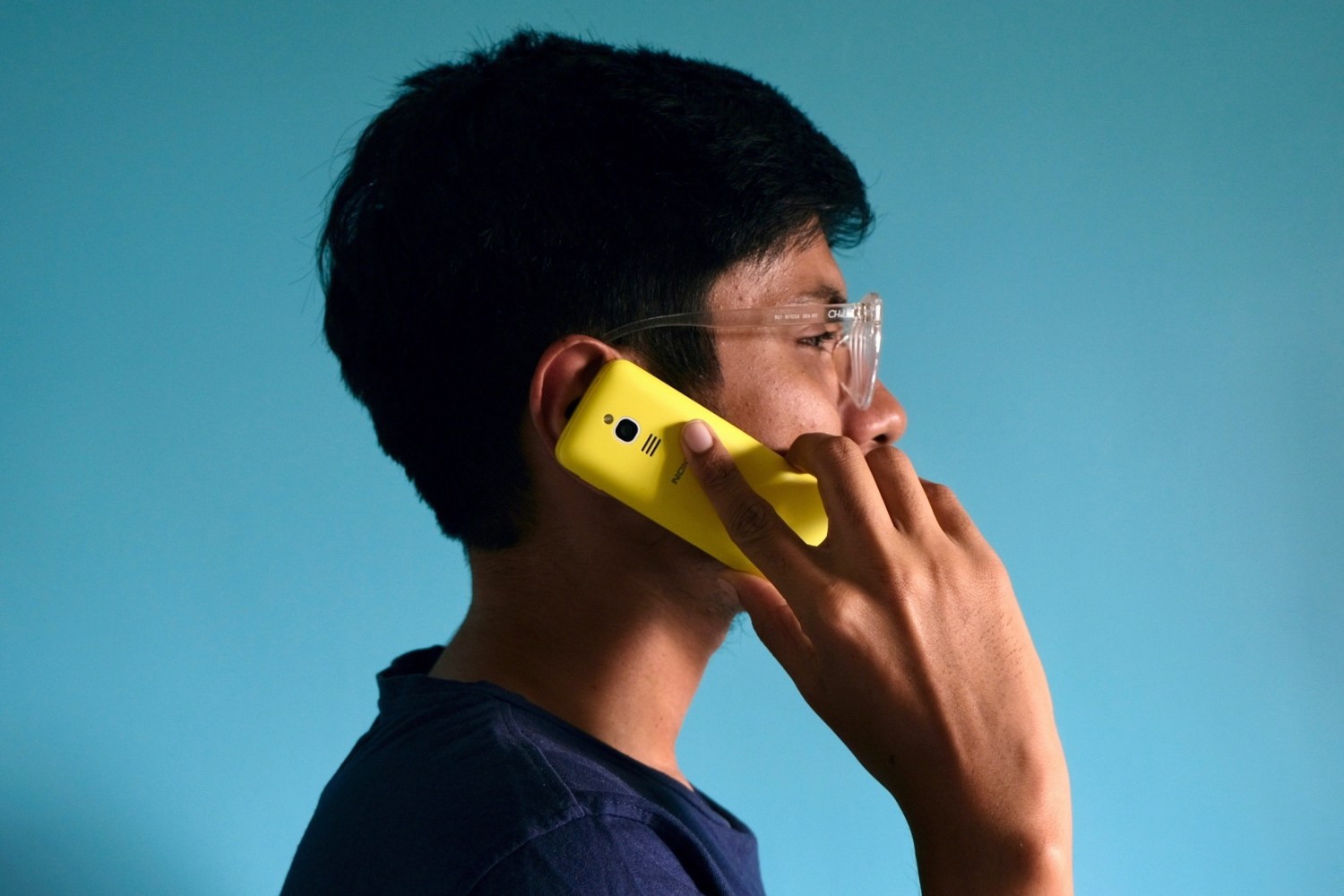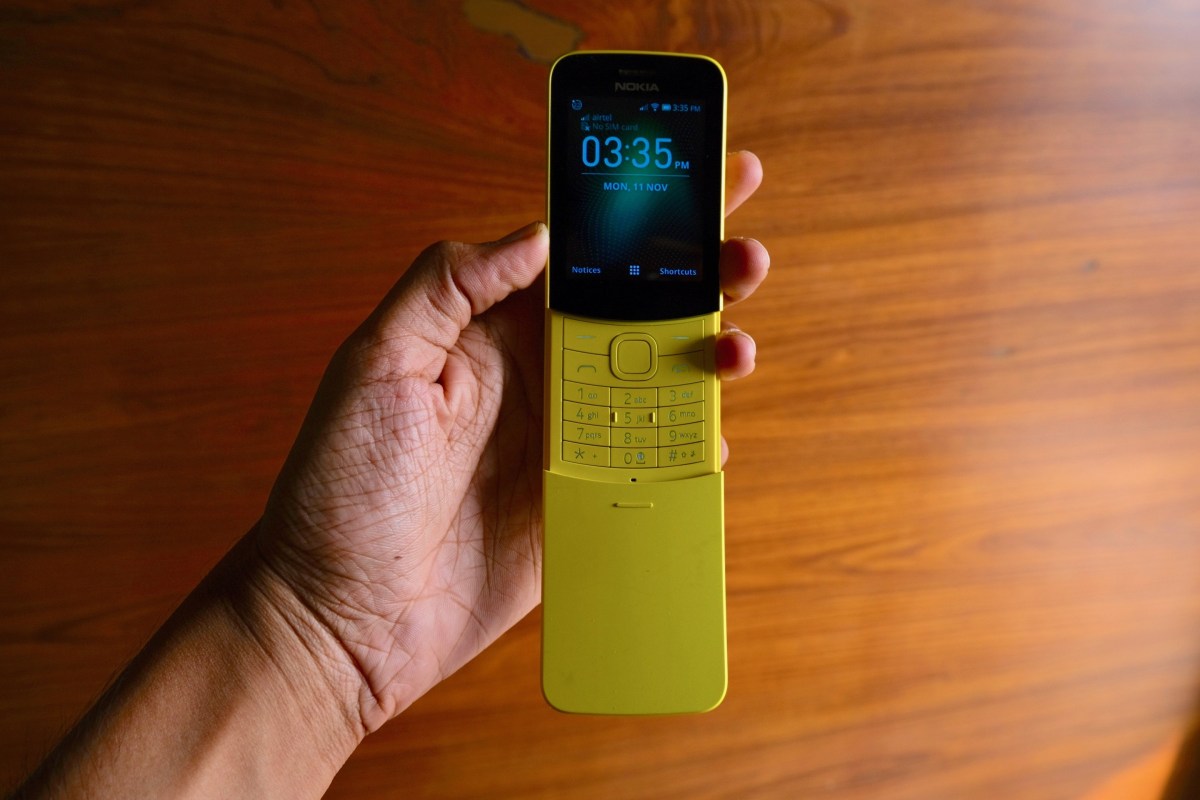
I’m sick of looking at my phone all the time. I can’t help it. On the subway, in supermarket checkout lines, binge-watching Netflix shows — here I am scrolling and tapping once again.
I’m tired of constantly being bombarded by notifications asking me if I’ve “checked this out.”
It’s not like I haven’t tried to reclaim the hours I spend on my phone. I’ve set screen time limits, switched off as many notifications as I can, and even invested in a smartwatch in hopes to not end up in an Instagram hole after innocuously pulling out my phone to check the time. To an extent, these restrictions did work; I’ve nearly managed to slash my smartphone usage in half. Still, I feel hijacked by my smartphone and the companies behind it. Of late, using my phone has begun to channel a sense of anxiety and fatigue within me.
So, I did something I didn’t think I would find myself doing in late 2019. I bought a yellow Nokia 8110 “dumb” phone, aka the “banana phone,” as some like to call it. The last time I even touched a slider phone was — let me get the math right on this one — a gazillion years ago.

A smarter dumbphone
This wasn’t a reckless purchase driven by nostalgia, nor do I believe it’s all that outrageous. Sure, I admit its looks played a vital role in swaying me toward the buy button. I mean, just look at it. The way its curved body rests naturally in the palm of my hand and the joy of sliding down the keyboard cover to answer calls bring the kind of experience a rectangular piece of glass will never be able to deliver.
All this aside, it’s the operating system within that convinced me. The Nokia 8110 and a handful of other phones run on a relatively smarter OS for dumbphones called KaiOS.
This wasn’t a reckless purchase driven by nostalgia.
KaiOS is designed primarily for first-time internet users from emerging countries like India, for whom smartphones and touchscreens can be a bit too intimidating. It functions and looks largely like any run-of-the-mill feature phone software. However, thanks to the HTML5-based app store, it allows tech companies such as Google and Facebook to easily build apps for physical keys and bare-bones hardware, which both have done.
Life goes on
At the time of writing, the Nokia 8110 I bought supported a string of apps I’m used to on my smartphone including Google Maps, WhatsApp, Twitter, and more. It also comes integrated with the Google Assistant, which is expected to soon gain the ability to execute actions on third-party apps, like sending a WhatsApp message, for instance. A phone that runs all my essential apps minus the unnecessary clutter and “always-on” feeling was just what I needed.
Therefore, for the past week, I’ve been actively using the Nokia 8110 with my primary SIM card inside, and despite my early skepticism, it has truly surprised me. I was able to chat on WhatsApp as I do normally (albeit at a much slower typing speed), search for destinations on Google Maps, scroll through Twitter and Facebook timelines, and even sync my emails. Heck, I even managed to book a cab through Uber’s web app.
More importantly, switching to a feature phone disabused me of the illusion that my life will come to a halt without my smartphone. It made me realize how insignificant most of what I used to do on my phone actually is.

Benefits and downsides
With the Nokia 8110, I wasn’t constantly scrolling endlessly on Twitter, or watching all the stories on Instagram. I didn’t miss out on much when I didn’t check an email or any other notification as soon as it landed.
What really hammered home benefits of the experiment for me is that texting or performing other tasks on the Nokia 8110 felt a lot more private. Sure, I was still on services made by the same omnipresent, data-collecting companies, but while I was feeding their algorithms some data, not each and every one of my moves were monitored, unlike when I use my Pixel 3.
I did face the obvious downsides and compromises that come with a dumbphone, of course. It does seem, at times, like going back in time. Google Maps, for instance, doesn’t have turn-by-turn navigation on KaiOS yet. Typing texts and emails takes minutes, not seconds. There’s no NFC or digital payment support. The camera is barely usable and the absence of a front lens means you can’t video chat.
But to be honest, I knew about these shortcomings before diving in, and they do make sense. KaiOS-powered phones, at least for now, are not made for smartphone users trying to find a little peace and solace.
My takeaway
The biggest lesson this process taught me was our smartphones don’t ever let us simply get bored and ponder. There’s always a new article, email, video, or tweet to consume. After the Nokia 8110 experience, I’m a lot more mindful of the time I spend staring at my smartphone. I take an extra second or two before I unlock it. At least for now.
The Nokia 8110 will be an excellent companion to my Google Pixel 3, and I will most likely choose the former when I’m just heading out to a dinner party. I’m sure there will be numerous smartphones that can take care of the selfies.
If you’re in the United States and would like a similar detox option, there aren’t a ton of KaiOS phones available. Your best bet may be the $50 Alcatel Smartflip, a good-ol’ flip phone that runs KaiOS and is compatible with a handful of carriers including AT&T and Cricket Wireless.
Editors' Recommendations
- The Honor V Purse is the most unusual foldable I’ve ever used
- The OnePlus Watch 2 is the Wear OS smartwatch I’ve been waiting for
- iOS 18 could add a customization feature I’ve waited years for
- This $2,350 smartwatch has one of the funkiest designs I’ve ever seen
- Arc Search is one of the best iPhone apps I’ve ever used




